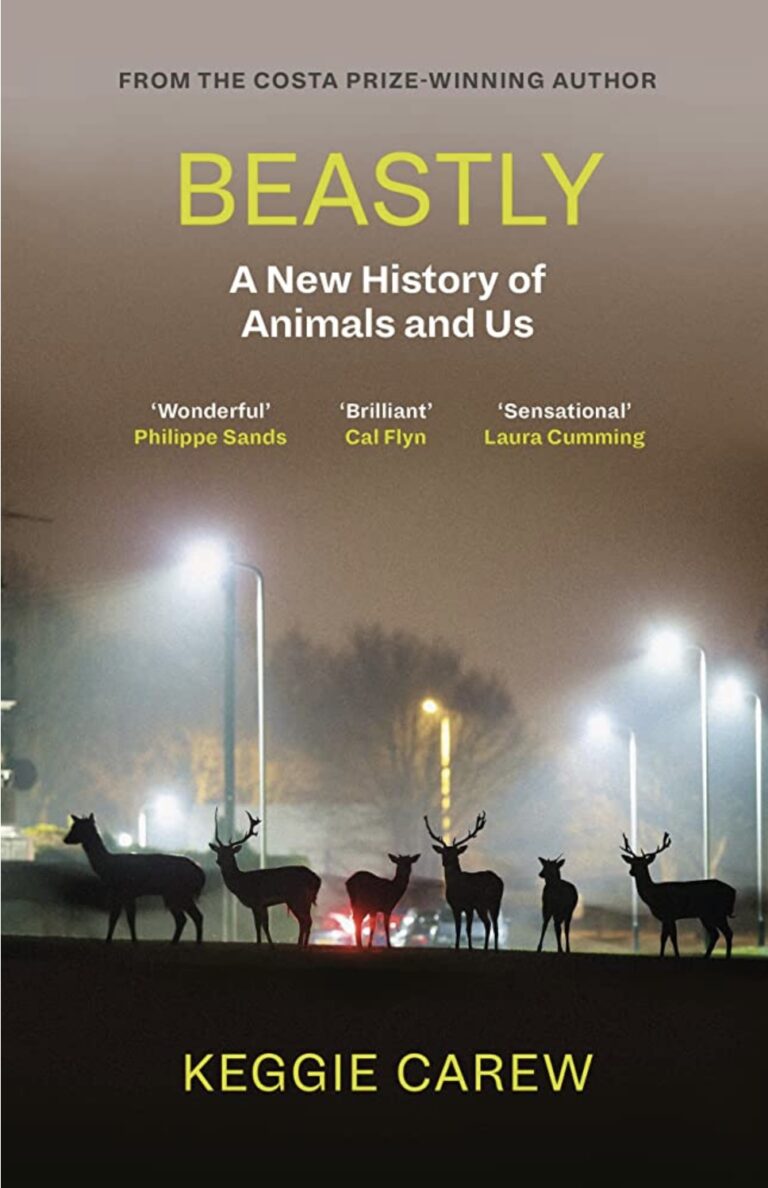If we love animals, why do we treat them so badly? This paradox runs like a thematic double helix through Keggie Carew’s fantastic, heartfelt history of human-animal relations. It goes back to cave paintings of animals in prehistoric Spain, whose unexpected accuracy feels simultaneously reverent and predatory. These were the animals the artists hoped to kill. And it stretches into the present day, when “canned hunting” enthusiasts in South Africa may pay £4,000 to shoot a lioness in an enclosure, then a bit extra to cuddle her cubs.
To the author, this juxtaposition of love and hate is a mystery. Why can’t we make up our minds? Carew made up hers at 12, during an epiphany while out riding her scruffy pony on the beach. In the exhilaration as they raced across the sand, their “energies knotted together” and she realised that she “loved this horse”.
Cannily, Carew kicks off her book with other stirring stories of cross-species romance. We learn of Polish ecologist Simona Kossak, who lived in the woods with a mischievous crow named Korasek and a sleepy wild boar called Żabka. Then we read of Konrad Lorenz, the Austrian zoologist who became surrogate mother to three goslings. There’s no whiff of impropriety in these bondings, unlike Leda or Pasiphaë of Greek mythology, for instance, who coupled with a swan and a bull respectively. However, we do learn that goslings who view a human as their parent will later try to mate with other humans.
From this specialised piece of information, we proceed to the divided souls who see no contradiction in loving some animals and killing others, or killing one animal and loving its offspring, or loving an animal and killing it when the time comes. In the Odyssey, the hero’s victory over the Cyclops is emblematic of man’s dominance of nature, yet he weeps when he sees his old hunting dog, Argos, after 20 years away.
Carew conjures the bumbling naturalist Alfred Russel Wallace, blasting away at orangutans in the forests of Borneo in 1855. After shooting dead one female, he goes all gooey over the offspring he just orphaned, exclaiming, “Nobody ever had such a dear little duck of a darling of a little brown hair baby before.” It’s not such a journey from there to 1938 footage of the Nazi bigwig Hermann Göring hunting in Poland, with a priapic black plume in his fedora, looking like a “pantomime Robin Hood”. He bags wolves and wild boar, quaffs foaming tankards of beer, and then, chillingly, winks at the camera.
This itself turns out to be sweetener for the sucker punch, which is the beauty we have lost with our ongoing destruction of the natural world. Contrast the descriptions, quoted by Carew, from the Lewis and Clark expedition across America, when they caught catfish the size of men, with anglers who today feel obliged to throw their catch back to avoid further depletion of stocks. Or reflect on David Attenborough’s words in his 2020 documentary A Life on Our Planet: “So the world is not as wild as it was. Well, we’ve destroyed it, not just ruined it … The non-human world has gone.”
The horrors of the industrial meat industry, which Carew describes unflinchingly, are made more palatable by lovely passages of nature writing that reminded me of DH Lawrence or Gerard Manley Hopkins – as when she extols “the female mosquito’s rapturous wing-whine” or “the silvers of sardines and other flashy fish”. There are moments when she goes too far. “My retina memory reel spools back” is an odd way to say that you remember having seen something before. But by and large, the poetry and the passion are welcome consolation. Consolation is what’s needed for “solastalgia”: a word coined to describe sorrow at environmental change, and the painful sense that we can never go home, because it no longer exists. This and some kind of solution. Here the author mentions the power of nature to mend when it’s allowed – a theme explored in Cal Flyn’s brilliant 2021 book Islands of Abandonment – but she doesn’t make enough of it. Carew is descriptive rather than prescriptive.
Pondering that first paradox – of humans who adore pets but will shoot a wood pigeon from the sky – I wonder if both impulses are rooted in the same instinct. There may be another nostalgia, which has little to do with planetary damage: an urge to return to the wild, where love and killing lived naturally side by side. This prompts the counter-thought that the best thing we might do for animals is neither to love nor hate them, but to leave them alone.

